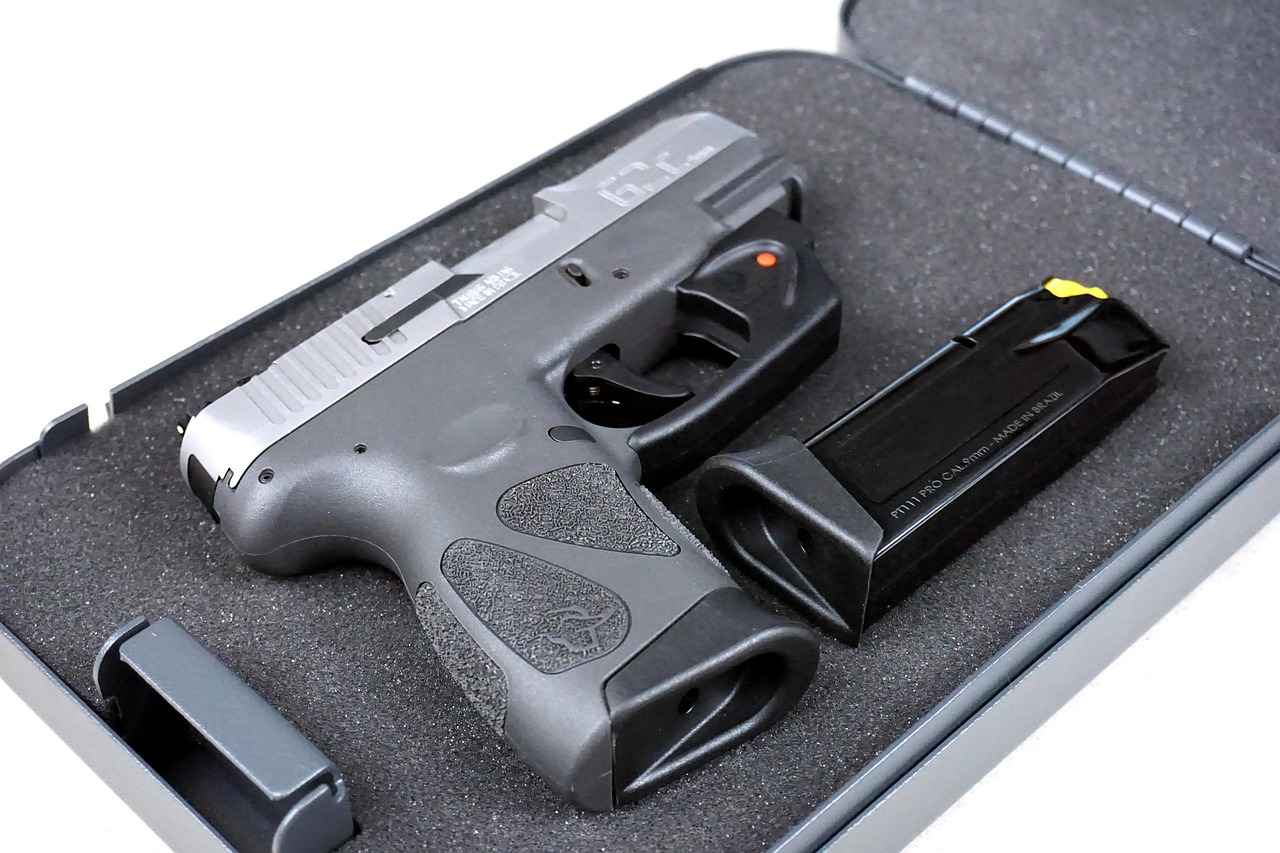This article provides a comprehensive guide for identifying various Glock models, detailing their features, specifications, and unique characteristics to help enthusiasts and potential buyers make informed decisions.
Glock model numbers are crucial for identification. Each model number corresponds to specific features, sizes, and purposes, aiding users in selecting the right firearm for their needs. For instance, the Glock 17 is a full-sized pistol, while the Glock 19 is a compact version, making it suitable for concealed carry. The model number can also indicate the caliber, with numbers like .40 or .45 denoting different ammunition types.
Several Glock models are widely recognized among firearm enthusiasts. The Glock 17, known for its reliability and accuracy, is often favored by law enforcement. The Glock 19 is a versatile option for both self-defense and competition shooting. Other notable models include the Glock 26 for concealed carry and the Glock 34, designed for competitive shooting with its longer barrel.
Glock has released multiple generations of its firearms, each featuring improvements and changes. The first generation introduced the polymer frame, while subsequent generations have added features like the finger grooves and picatinny rails. Understanding these generations is crucial for accurate identification and informed purchasing decisions, as each generation may have different specifications and ergonomic designs.
Each Glock model has a unique designation that provides information about its caliber, size, and features. For example, the Glock 21 indicates a .45 ACP caliber weapon, while the Glock 43 signifies a single-stack 9mm pistol. Knowing how to decode these designations effectively can help potential buyers choose the right model for their needs.
Physical characteristics such as size, weight, and barrel length can help identify different Glock models. The Glock 17 has a barrel length of 4.49 inches, while the Glock 19 measures 4.02 inches. Weight also varies, with the Glock 26 being lighter, making it ideal for everyday carry. Understanding these attributes will assist in distinguishing between models.
Glocks are available in various calibers, affecting their performance and suitability for different purposes. The 9mm is popular for its manageable recoil and high capacity, while the .40 S&W offers greater stopping power. This section will explore the caliber options and how they relate to model identification, helping users select the right firearm based on their shooting preferences.
Accessories and modifications can alter the appearance and functionality of Glock models. From aftermarket sights to extended magazines, these enhancements can significantly impact performance. Popular accessories include tactical lights and holsters, which may also affect model identification. Understanding these accessories is essential for anyone looking to customize their Glock.
The serial number on a Glock can provide valuable information about its model and manufacturing date. Each Glock is stamped with a serial number that can be traced back to its production year. This section will explain how to read and interpret Glock serial numbers, offering insights into the model’s history and authenticity.
There are several misconceptions surrounding Glock models that can lead to confusion. For example, some believe that all Glocks are the same size or caliber. This section will clarify these misunderstandings to aid in accurate identification, ensuring that buyers are well-informed before making a purchase.
Various resources are available for those seeking to identify Glock models. Websites like the official Glock site, forums dedicated to firearms enthusiasts, and reference books can provide valuable insights. This section will outline reliable sources, helping users navigate the wealth of information available for Glock identification.
Expert insights can significantly enhance the identification process. Seasoned Glock users often recommend examining features such as the grip texture and slide serrations. This section will provide practical tips from firearms experts, ensuring that enthusiasts can accurately identify Glock models with confidence.
Understanding the legal implications of owning and identifying Glock models is essential. Laws regarding firearm ownership can vary significantly by region. This section will address relevant laws and regulations that affect firearm identification and ownership, ensuring that users remain compliant with legal requirements.
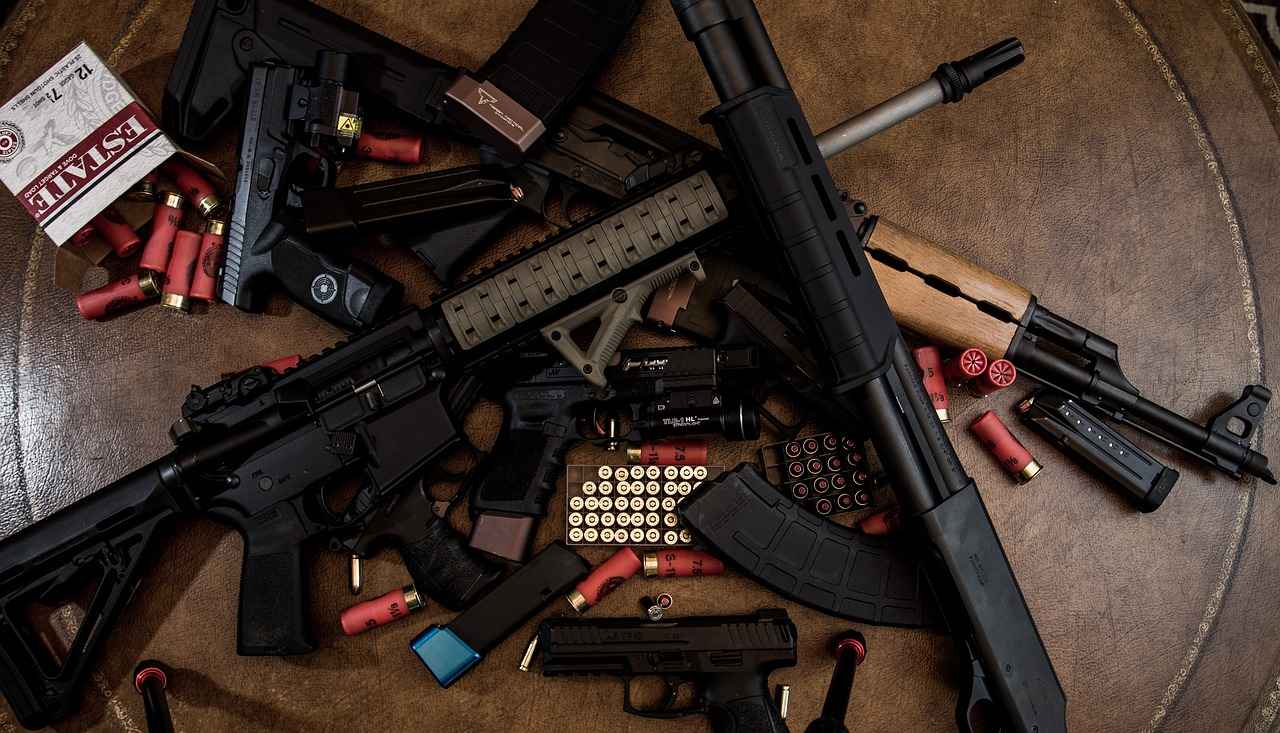
Understanding Glock Model Numbers
In the world of firearms, identification is crucial, particularly when it comes to Glock pistols. Understanding Glock model numbers is essential for anyone interested in purchasing or owning one of these popular firearms. Each model number is not just a random sequence of digits and letters; it carries significant meaning that denotes specific features, sizes, and intended purposes of the firearm. This knowledge is invaluable for enthusiasts and potential buyers alike, as it aids in making informed decisions.
Glock model numbers serve as a key to unlock the unique characteristics of each firearm. For instance, the model number often indicates the caliber of the pistol, its size, and its intended use. The first digit of the model number usually represents the size category, while subsequent digits may indicate specific features or design elements. For example, a Glock 17 is a full-sized pistol, while a Glock 19 is a compact version, designed for easier handling and concealment.
Moreover, the model numbers are not static; they evolve with the introduction of new generations. Glock has released various generations of its firearms, each incorporating improvements based on user feedback and technological advancements. Understanding these generational changes can make a significant difference in identifying the right model for your needs.
Additionally, Glock models are often categorized into different series, such as the Glock Standard, Glock Gen4, and Glock Gen5. Each series comes with its own set of enhancements, including changes to frame design, trigger mechanisms, and safety features. For example, the Gen5 models feature a flared magwell for faster reloads and an ambidextrous slide stop, making them more user-friendly for both left- and right-handed shooters.
When examining a Glock model number, it is essential to consider the caliber it represents. Glock offers a variety of calibers, including 9mm, .40 S&W, and .45 ACP. The choice of caliber can significantly affect performance, recoil, and suitability for specific applications, such as self-defense or competitive shooting. Understanding the caliber associated with a model number can help users select the most appropriate firearm for their needs.
In summary, Glock model numbers are more than mere identifiers; they encapsulate a wealth of information that can guide potential buyers in their selection process. By understanding the meaning behind these numbers, users can make informed choices that align with their specific requirements and preferences. Whether you are a seasoned firearms enthusiast or a first-time buyer, grasping the intricacies of Glock model numbers will enhance your overall experience and satisfaction with your chosen firearm.

Popular Glock Models Overview
Among firearm enthusiasts, several Glock models have gained significant recognition due to their reliability, versatility, and performance. Understanding these models is essential for anyone looking to purchase a Glock, whether for personal defense, sport shooting, or law enforcement. This section will explore the most popular Glock models, highlighting their key attributes and common uses.
- Glock 17: Often referred to as the “standard” Glock, the Glock 17 is a full-sized pistol that is widely used by law enforcement and military personnel around the world. It features a 4.49-inch barrel and holds 17 rounds in its magazine. Known for its accuracy and ease of handling, the Glock 17 is an excellent choice for both beginners and experienced shooters.
- Glock 19: The Glock 19 is a compact version of the Glock 17, making it a popular choice for concealed carry. With a 4.02-inch barrel and a magazine capacity of 15 rounds, it strikes a balance between size and firepower. The Glock 19 is favored by many law enforcement agencies and civilians alike for its versatility and reliability.
- Glock 26: Known as the “Baby Glock,” the Glock 26 is one of the smallest models in the lineup. It features a 3.43-inch barrel and a magazine capacity of 10 rounds. Its compact size makes it ideal for concealed carry, especially for those who prioritize discretion without sacrificing firepower.
- Glock 34: Designed for competition shooting, the Glock 34 has a longer 5.31-inch barrel and an extended magazine capacity of 17 rounds. Its longer sight radius and enhanced accuracy make it a favorite among competitive shooters. The Glock 34 is also equipped with a lighter trigger pull, further improving its performance on the range.
- Glock 43: The Glock 43 is a single-stack, subcompact pistol that is designed specifically for concealed carry. With a 3.39-inch barrel and a magazine capacity of 6 rounds, it is lightweight and easily concealable. Its slim profile makes it a popular choice for those who seek a reliable self-defense firearm that can be comfortably carried throughout the day.
- Glock 45: The Glock 45 combines features from both the Glock 17 and Glock 19. It has a 4.02-inch barrel and a magazine capacity of 17 rounds. With its compact size and full-sized grip, the Glock 45 is designed for versatility, making it suitable for both duty and personal defense.
Each of these models has unique features that cater to different needs and preferences. Whether you’re looking for a full-sized service pistol or a compact firearm for everyday carry, Glock offers a model that can meet your requirements. Understanding the differences among these popular models can help you make an informed decision when selecting the right Glock for your needs.
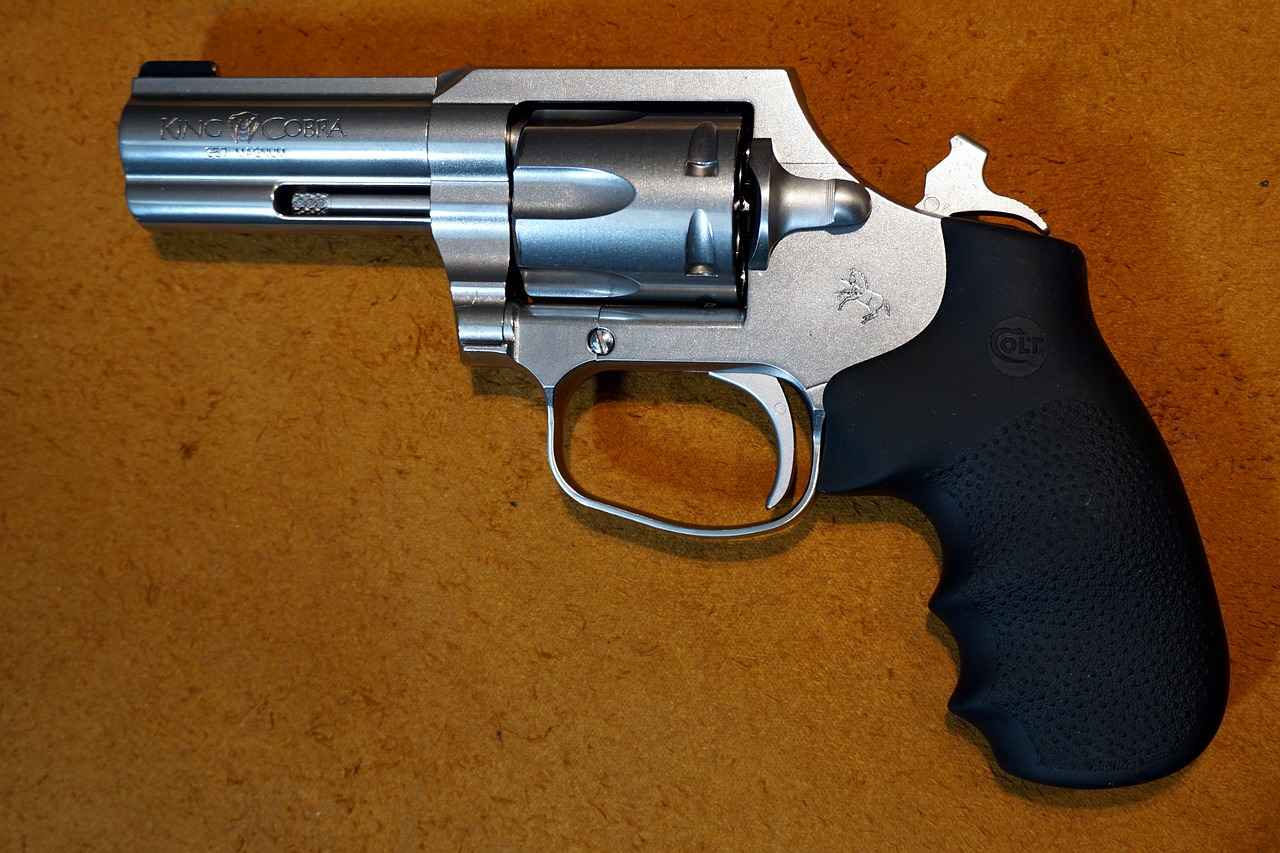
Identifying Glock Generations
Glock, a name synonymous with reliability and innovation in the firearm industry, has introduced several generations of its handguns since its inception. Each generation brings a series of enhancements that cater to the evolving needs of users, making it essential for enthusiasts and potential buyers to understand these differences. This understanding not only aids in accurate identification but also informs purchasing decisions, ensuring that the right Glock model is chosen for specific requirements.
- First Generation (1982-1988): The original Glock models, known for their simplicity and durability, featured a polymer frame and a striker-fired mechanism. These models set the foundation for what would become a revolutionary design in the firearms market.
- Second Generation (1988-1997): This generation introduced enhancements such as finger grooves on the grip and an accessory rail for mounting lights and lasers. These features improved ergonomics and versatility, making them popular among law enforcement and civilian users alike.
- Third Generation (1998-2010): The third generation saw significant upgrades, including an ambidextrous magazine release and a more pronounced finger groove design. The addition of a rail system allowed for the attachment of various accessories, enhancing the firearm’s utility.
- Fourth Generation (2010-Present): Known for its modular backstrap system, the fourth generation allows users to customize the grip size for better comfort and control. Additionally, it features a dual recoil spring assembly that helps reduce felt recoil, improving accuracy during rapid fire.
- Fifth Generation (2017-Present): The latest generation includes several advancements such as the removal of the finger grooves, a flared magwell for easier reloading, and improved slide serrations for better handling. These changes reflect Glock’s commitment to continuous improvement and user feedback.
Understanding these generations is crucial for anyone looking to purchase a Glock. Each model number corresponds to a specific generation and its associated features, making it easier to identify the right firearm. Moreover, knowing the generational differences can help in assessing the resale value of a Glock, as newer models often come with enhanced features that may appeal to buyers.
When considering a purchase, it is advisable to examine the specific features of each generation. For example, the third generation’s ambidextrous magazine release may be a deciding factor for left-handed shooters, while the modular backstrap system of the fourth generation might attract those who prioritize customization. Additionally, the fifth generation’s modern enhancements could be appealing to buyers seeking the latest technology in firearm design.
In conclusion, being aware of the various Glock generations allows for informed decision-making, whether you are a seasoned firearm enthusiast or a first-time buyer. The continuous evolution of Glock handguns ensures that users have access to the latest advancements in firearm technology, enhancing both performance and safety. By understanding these generational changes, buyers can select a model that best fits their needs and preferences.

Decoding Glock Model Designations
Understanding the designations of Glock models is crucial for both enthusiasts and potential buyers. Each Glock model has a unique identifier that conveys essential information about its caliber, size, and specific features. This section will guide you through the process of decoding these designations effectively.
At first glance, Glock model numbers may seem like a random assortment of digits and letters, but they follow a systematic naming convention. The first digit in the model number typically indicates the series of the firearm. For instance, models starting with “17” are part of the original series, while “19” indicates a compact version of the same series. This numbering system helps users quickly identify the intended use of the firearm.
Next, let’s discuss the significance of the letters that may follow the model number. These letters often denote specific features or modifications. For example, a “G” in the designation may signify a Glock model that has undergone certain enhancements, such as the Glock 19 Gen 5. The “Gen” indicates the generation of the firearm, which is essential for understanding the improvements made over previous iterations.
In addition to the model number and letters, Glock also incorporates caliber designations in some models. For instance, a Glock 22 is chambered for .40 S&W, while a Glock 9mm model would be designated with a “9” in the model number. Recognizing these caliber indicators is vital for ensuring you select a model that meets your specific needs, whether for personal defense, sport shooting, or law enforcement applications.
Another aspect to consider is the size of the Glock model, which can be inferred from the model number as well. Full-sized models, like the Glock 17, are typically larger and designed for duty use, while subcompact models, such as the Glock 43, are more suitable for concealed carry. Understanding these size distinctions can significantly impact your choice, especially if you prioritize portability and ease of use.
To further aid in decoding Glock designations, it is beneficial to familiarize yourself with the Glock catalog, which provides detailed specifications and features for each model. Many enthusiasts also turn to online forums and communities where experienced users share insights and tips on identifying and selecting the right Glock for various applications.
In summary, decoding Glock model designations involves understanding the numerical and alphabetical components that denote series, features, and caliber. By mastering this knowledge, you can make informed decisions when selecting a Glock model that suits your needs, ensuring you choose a firearm that aligns with your intended use and preferences.

Physical Characteristics of Glock Models
Identifying different Glock models can be a daunting task, especially for newcomers to the firearms community. One of the most effective ways to distinguish between various Glock models is through their physical characteristics. These characteristics include size, weight, and barrel length, which can vary significantly from one model to another. Understanding these attributes is crucial for enthusiasts and potential buyers alike, as they play a vital role in the firearm’s performance and suitability for specific uses.
Size Variations Across Glock Models
The size of a Glock model can influence its handling and usability. Glock offers a range of models that differ in overall dimensions. For instance, the Glock 17, often referred to as the “full-size” model, has a length of approximately 8.03 inches and a height of around 5.47 inches. In contrast, the Glock 19, a popular compact model, measures about 7.36 inches in length and 5.04 inches in height. This reduction in size makes the Glock 19 more suitable for concealed carry, while the Glock 17 is often favored for duty use or competitive shooting.
Weight Considerations
Weight is another critical factor when identifying Glock models. The Glock 17 weighs approximately 25.06 ounces when unloaded, while the Glock 19 is slightly lighter at around 23.65 ounces. The weight difference can impact the firearm’s recoil management and overall comfort during extended use. Heavier models may provide more stability, while lighter models can enhance ease of carry, making them ideal for personal defense.
Barrel Length Insights
Barrel length also plays a significant role in the identification of Glock models. The Glock 17 features a barrel length of 4.49 inches, which contributes to its accuracy and performance. On the other hand, the Glock 19 has a slightly shorter barrel at 4.02 inches, making it more compact and easier to maneuver in tight spaces. Understanding these differences can help users select a model that aligns with their shooting preferences and needs.
Comparative Overview of Glock Models
| Model | Overall Length | Height | Weight (Unloaded) | Barrel Length |
|---|---|---|---|---|
| Glock 17 | 8.03 inches | 5.47 inches | 25.06 ounces | 4.49 inches |
| Glock 19 | 7.36 inches | 5.04 inches | 23.65 ounces | 4.02 inches |
| Glock 26 | 6.41 inches | 4.17 inches | 19.75 ounces | 3.43 inches |
In summary, the physical characteristics of Glock models—size, weight, and barrel length—are essential for identifying different firearms. By understanding these attributes, users can make informed decisions based on their specific needs, whether for personal defense, competition, or recreational shooting. Familiarity with these details not only aids in proper identification but also enhances the overall shooting experience.

Caliber Differences Among Glock Models
When it comes to Glocks, one of the most significant factors that influence their performance and applicability is the caliber. Glock offers a variety of calibers across its models, each designed to serve different purposes and meet the needs of diverse users. Understanding these calibers is crucial for anyone looking to purchase a Glock, whether for personal defense, competitive shooting, or law enforcement use.
The most common calibers available in Glock models include:
- .380 ACP – This caliber is often associated with compact models, providing a balance between size and firepower, making it suitable for concealed carry.
- 9mm – The 9mm caliber is perhaps the most popular choice among Glock users. It offers a good mix of manageable recoil, magazine capacity, and stopping power, making it ideal for both self-defense and competitive shooting.
- .40 S&W – This caliber is favored by law enforcement agencies for its increased stopping power. Glocks chambered in .40 S&W provide a larger bullet diameter and greater energy, though they come with increased recoil.
- .45 ACP – Known for its stopping power, the .45 ACP caliber is typically found in larger Glock models. While it offers significant firepower, it also results in a heavier firearm.
- 10mm – This caliber is designed for those looking for a powerful round, often used for hunting and outdoor protection against larger threats.
Each caliber affects the model identification of Glocks. For instance, a Glock 19 is chambered in 9mm, while a Glock 22 is designed for .40 S&W. The model number itself often indicates the caliber, making it easier for users to select the appropriate firearm for their requirements.
Moreover, the choice of caliber can significantly influence a Glock’s performance characteristics. For example, the recoil management varies with each caliber, impacting how quickly a shooter can get back on target after firing. The magazine capacity also differs; generally, 9mm models can hold more rounds compared to their .40 and .45 counterparts, which can be a decisive factor for many users.
In addition to performance, the caliber can also affect the ergonomics of the firearm. Models chambered in larger calibers tend to be heavier, which can influence the handling and comfort during extended use. This is particularly important for those who may carry their Glock for long periods.
Understanding the differences in caliber among Glock models is essential for making an informed choice. Whether you prioritize stopping power, capacity, or recoil management, knowing the caliber options available will help you select the right Glock that meets your specific needs.
As you explore the various Glock models, keep in mind that the caliber is not just a number; it represents a significant aspect of the firearm’s identity and functionality. Therefore, consider your intended use and personal preferences when selecting a Glock model based on its caliber.

Understanding Glock Accessories and Modifications
In the world of firearms, accessories and modifications play a significant role in enhancing both the functionality and aesthetics of Glock models. From improved grip textures to advanced sight systems, these additions can dramatically change how a Glock performs and is perceived by users.
One of the most popular modifications among Glock enthusiasts is the installation of aftermarket sights. Standard Glock sights are functional, but many shooters prefer options that offer quicker target acquisition or greater accuracy. Options such as fiber optic sights or tritium night sights provide enhanced visibility in various lighting conditions, making them a favored choice for personal defense and competitive shooting.
Another common accessory is the use of extended magazines. These magazines increase ammunition capacity, allowing for a higher round count before needing to reload. While they can enhance performance in competitive scenarios, it’s essential to ensure that these modifications comply with local laws and regulations regarding magazine capacity.
Grip modifications, including grip tape or custom grips, are also prevalent. These enhancements improve handling and control, especially during rapid-fire situations. Custom grips can be tailored to fit the user’s hand size and shooting style, providing a more personalized shooting experience.
Additionally, light and laser attachments have gained popularity. Tactical lights can illuminate dark environments, while laser sights can assist in aiming, particularly under stress. These accessories not only improve functionality but also contribute to overall safety by allowing for better target identification.
It’s important to note that while accessories can enhance a Glock’s performance, they can also complicate model identification. For instance, a Glock 19 with a custom slide and different sights may look significantly different from a stock model, potentially leading to confusion for those unfamiliar with the modifications.
Furthermore, the addition of accessories can affect the weight and balance of the firearm, which can influence shooting dynamics. Users should test their modified Glocks to ensure that they still meet their intended purpose and feel comfortable during use.
In summary, understanding the impact of accessories and modifications is crucial for Glock owners. Not only do these enhancements improve functionality and personalization, but they also play a role in how models are identified. Enthusiasts should remain informed about the latest accessories and their implications on both performance and identification.
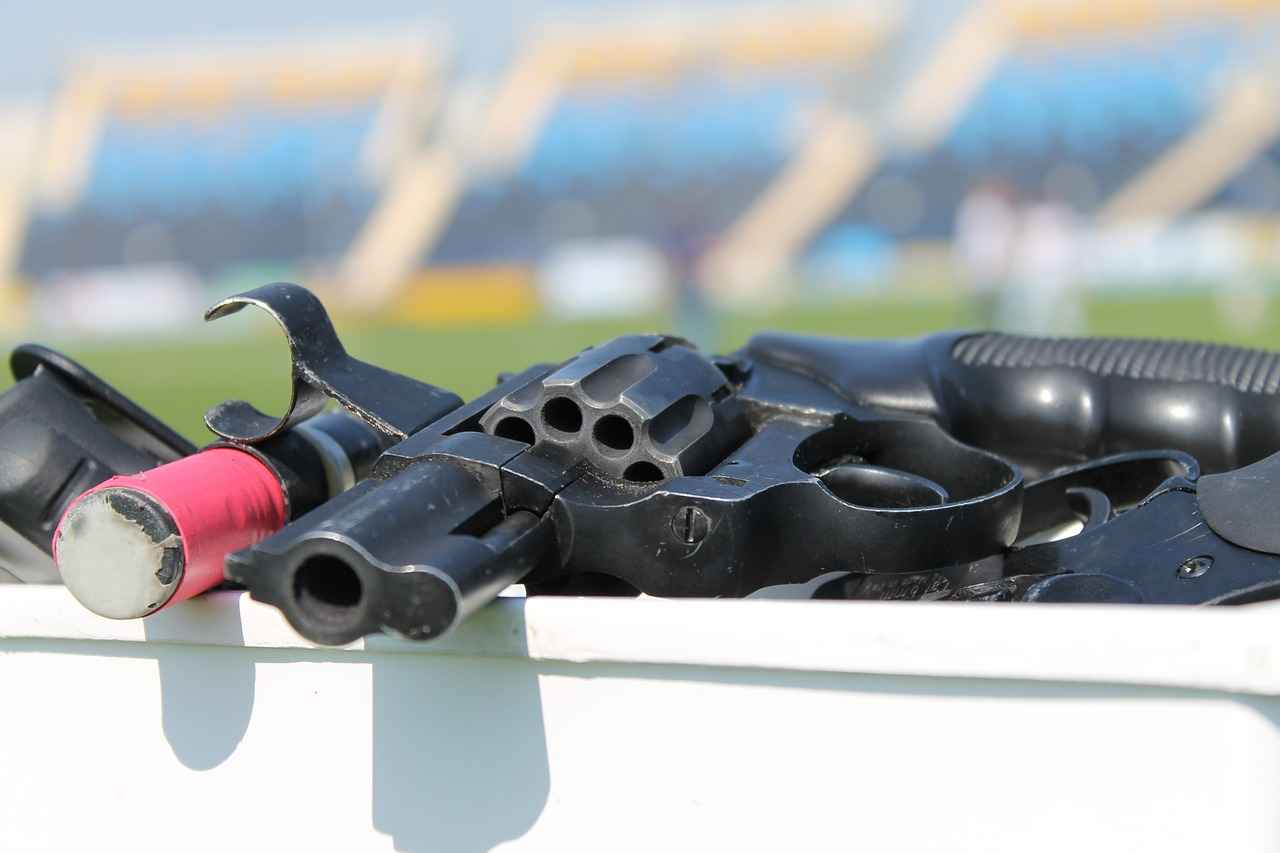
Serial Numbers and Manufacturing Dates
The serial number on a Glock is not merely a random assortment of digits; it serves as a crucial identifier that can reveal a wealth of information about the firearm. Understanding how to read and interpret these serial numbers is essential for both enthusiasts and potential buyers. This section will delve into the significance of Glock serial numbers, how to decode them, and what information they can provide.
Each Glock firearm is assigned a unique serial number that can help identify its model and manufacturing date. This number is typically located on the frame of the gun, often near the trigger guard or on the slide. The format of the serial number may vary depending on the model and generation of the Glock, but it generally consists of a combination of letters and numbers.
- Model Identification: The serial number can often indicate the specific model of the Glock. For example, the first few digits may correspond to a particular series, such as the Glock 17 or Glock 19.
- Manufacturing Date: Glock serial numbers can also provide insights into the manufacturing date. Glock uses a specific coding system where the serial number can be cross-referenced with production records to determine when the firearm was made.
To decode a Glock serial number, one can refer to various online resources or Glock’s official documentation. Many enthusiasts and collectors maintain databases that can assist in identifying the manufacturing year based on the serial number. This is particularly useful for those looking to purchase used firearms, as knowing the age of the weapon can impact its value and reliability.
In addition to the serial number, Glock firearms also feature a proof mark, which indicates that the gun has been tested for safety and functionality. This mark is typically found on the barrel or slide and can further assist in verifying the authenticity of the firearm.
It’s important to note that while the serial number provides valuable information, it should be used responsibly. Firearms ownership comes with legal responsibilities, and it is crucial to ensure that any transaction involving a Glock is conducted in compliance with local laws and regulations.
In summary, understanding Glock serial numbers is an integral part of firearm identification. By learning how to read and interpret these numbers, enthusiasts and potential buyers can make informed decisions regarding their purchases, ensuring they select the right model for their needs.

Common Misconceptions About Glock Models
When it comes to Glock handguns, there are numerous misconceptions that can create confusion among enthusiasts and potential buyers alike. Understanding these misconceptions is vital for accurate identification and informed decision-making. Below, we will clarify some of the most common misunderstandings surrounding Glock models.
- Misconception 1: All Glocks are the same.
- Misconception 2: Glock models are only available in 9mm.
- Misconception 3: All Glocks have the same trigger pull weight.
- Misconception 4: Glocks are not customizable.
- Misconception 5: Older Glock models are obsolete.
This is perhaps the most pervasive myth. In reality, Glock offers a wide range of models, each designed for different purposes. From compact models like the Glock 26 to full-sized options like the Glock 17, each firearm has unique features tailored to specific needs.
While 9mm is one of the most popular calibers for Glock handguns, the brand manufactures firearms in various calibers, including .40 S&W, .45 ACP, and even .357 SIG. This variety allows users to select a model that best fits their shooting preferences and requirements.
Another common misunderstanding is that all Glock models possess identical trigger pull weights. In fact, different models and generations may feature variations in trigger pull, with some designed for greater precision and others for rapid shooting.
Contrary to this belief, Glocks are highly customizable. Enthusiasts can enhance their firearms with various accessories, including sights, grips, and trigger modifications. This adaptability is one of the reasons why Glocks remain popular among firearm users.
While newer generations of Glock models may boast improved features, older models are not necessarily obsolete. Many seasoned shooters prefer older models for their reliability and simplicity, proving that they still hold value in the current market.
By addressing these misconceptions, we aim to provide a clearer understanding of Glock models. Whether you are a seasoned enthusiast or a newcomer to the world of firearms, recognizing these myths will aid in the accurate identification and selection of the right Glock for your needs.

Resources for Glock Identification
Identifying the correct Glock model can be a daunting task for both new and seasoned firearm enthusiasts. Fortunately, a variety of resources are available to assist in this process. This section will provide an overview of reliable sources, including websites, forums, and reference books, all designed to help users accurately identify Glock models.
- Official Glock Website: The first and most authoritative source for Glock identification is the official Glock website. Here, users can find detailed information about each model, including specifications, features, and even manuals. The website is regularly updated, ensuring that the information is current and accurate.
- Online Firearm Forums: Engaging with online communities can provide valuable insights. Websites like AR15.com and GlockForum.com host discussions among Glock enthusiasts who share their experiences and knowledge. These forums often have sections dedicated to identifying models, where users can post images and ask for help.
- Social Media Groups: Platforms like Facebook and Reddit have groups specifically for Glock lovers. These groups can be a treasure trove of information, featuring posts that discuss various models, modifications, and identification tips. Engaging with these communities can provide real-time feedback and advice.
- Reference Books: Several books are dedicated to Glock firearms, offering in-depth analysis and historical context. Titles such as The Glock: A History of the World’s Most Popular Handgun by Paul Barrett and Glock: The Rise of America’s Gun by David Codrea provide comprehensive information that can aid in identification.
- YouTube Channels: Many firearms experts and enthusiasts share their knowledge through video content. Channels like IraqVeteran8888 and Colion Noir often review Glock models and discuss their features, which can be particularly helpful for visual learners.
- Manufacturer’s Manuals: Each Glock model comes with a manual that includes detailed specifications and diagrams. These manuals can often be found online in PDF format on the official Glock website or other firearm-related sites. Having access to these manuals can significantly enhance the identification process.
- Local Gun Shops and Ranges: Visiting a local gun shop or shooting range can provide hands-on experience with various Glock models. Knowledgeable staff can assist in identifying models and may offer demonstrations that can clarify differences between them.
In conclusion, leveraging a combination of these resources will greatly enhance your ability to identify Glock models accurately. By utilizing official websites, engaging with communities, and consulting reference materials, you can become more knowledgeable and confident in your understanding of these firearms. Whether you are a potential buyer or a long-time enthusiast, these tools will empower you to make informed decisions regarding Glock models.
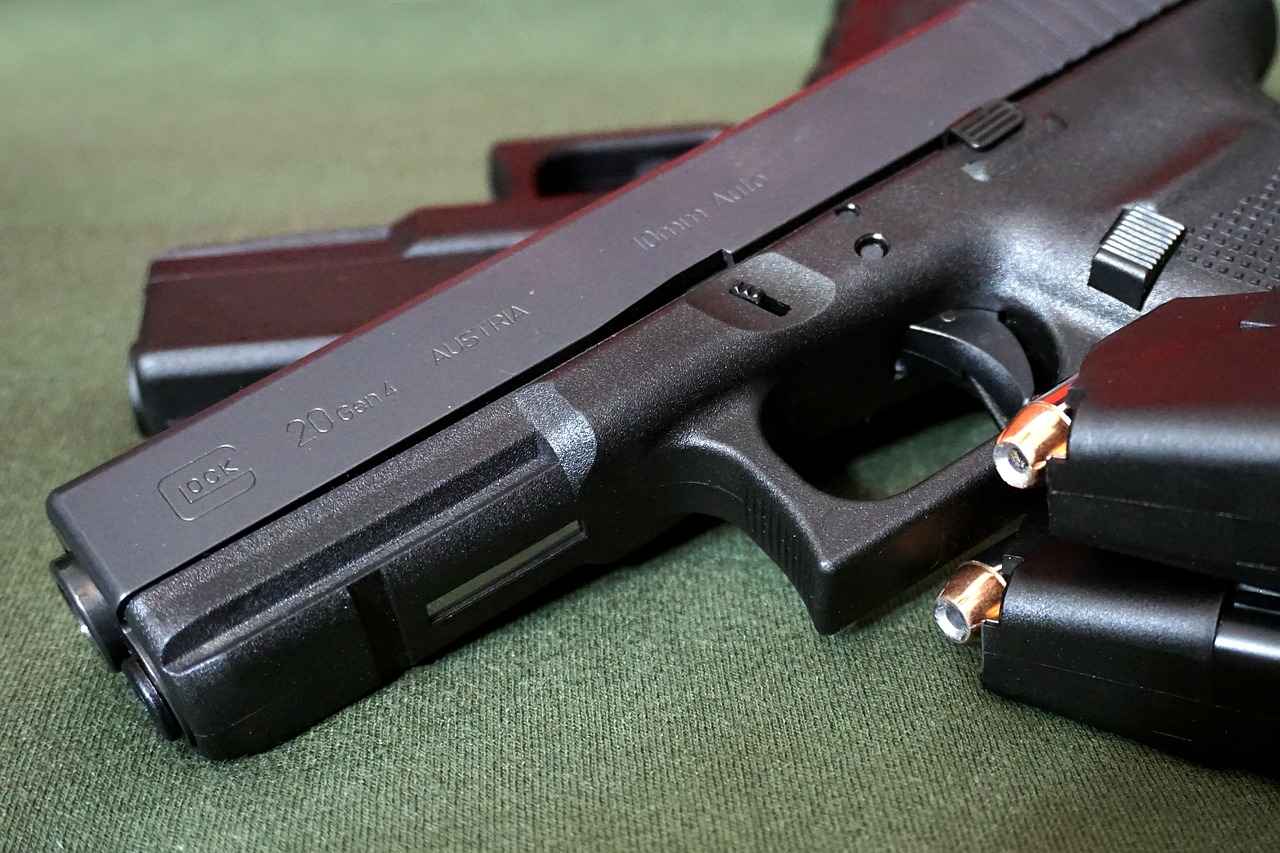
Expert Tips for Identifying Glock Models
Identifying Glock models can be a daunting task for both new enthusiasts and seasoned users. However, with insights from experienced Glock users and firearms experts, the process can become much easier and more reliable. This section will provide valuable tips that can significantly enhance your ability to accurately identify various Glock models.
- Familiarize Yourself with Model Numbers: Each Glock model has a unique number that indicates its specifications. For instance, the Glock 17 is a full-sized pistol, while the Glock 19 is a compact version. Understanding these numbers will help you quickly determine the model type.
- Learn About Generational Differences: Glock has released several generations of its firearms, each with distinct features. For example, Gen 4 models often include a dual recoil spring assembly, improving recoil management. Recognizing these generational traits can aid in identification.
- Examine Physical Characteristics: Pay attention to the size, weight, and barrel length of the firearm. For instance, the Glock 34 has a longer barrel than the Glock 26, which is a subcompact model. These physical attributes are crucial for distinguishing between models.
- Check the Caliber: Glock models come in various calibers, such as 9mm, .40 S&W, and .45 ACP. Knowing the caliber can narrow down your search and help identify the model. For example, the Glock 22 is chambered in .40 S&W, whereas the Glock 19 is in 9mm.
- Inspect Serial Numbers: The serial number on a Glock can reveal its manufacturing date and model. Each number is unique, and understanding how to read it can provide insights into the specific model and its history.
- Utilize Online Resources: There are numerous websites, forums, and social media groups dedicated to Glock enthusiasts. Engaging with these communities can provide firsthand insights and answers to specific identification questions.
- Seek Expert Opinions: If you’re ever in doubt, don’t hesitate to consult with firearms experts or experienced Glock users. Their knowledge can provide clarity and help you make informed decisions.
By applying these expert tips, you can enhance your ability to identify Glock models accurately. Each piece of information contributes to a more comprehensive understanding of the firearm, ensuring that you can confidently determine which model best suits your needs.

Legal Considerations When Identifying Glock Models
Understanding the legal landscape surrounding firearm ownership, particularly with brands like Glock, is crucial for both enthusiasts and potential buyers. Firearms laws can vary significantly from one jurisdiction to another, and being informed about these regulations is essential to ensure compliance and responsible ownership.
- Federal Laws: In the United States, federal laws govern the sale, ownership, and transfer of firearms. The Bureau of Alcohol, Tobacco, Firearms and Explosives (ATF) regulates these laws, which include background checks and the prohibition of certain individuals from owning firearms.
- State Regulations: Each state has its own set of laws regarding firearm ownership. Some states may require permits or licenses to own a Glock, while others may have restrictions on specific models or features.
- Local Ordinances: Beyond state laws, local municipalities may impose additional regulations. It is vital to check local laws to ensure that you are compliant with all applicable regulations.
When identifying Glock models, it is also important to consider the implications of the model number and serial number. The model number can indicate specific features that may be regulated in certain areas, such as magazine capacity or barrel length. For instance, a Glock 17, which is a full-sized pistol, may be subject to different regulations compared to a Glock 19, which is a compact model.
Ownership Responsibilities
Owning a Glock or any firearm comes with responsibilities. Owners must ensure that they are knowledgeable about safe handling practices, storage requirements, and the legal implications of using their firearm. In many jurisdictions, failing to secure a firearm properly can lead to legal consequences.
Moreover, understanding the process for transferring ownership of a Glock is essential. This includes ensuring that the transfer complies with both federal and state laws. For example, private sales may have different requirements compared to sales conducted through licensed dealers.
Identifying Glock Models Legally
When it comes to identifying Glock models, documentation is key. Owners should maintain records of their purchase, including receipts and any relevant paperwork, which can be crucial for legal verification. Additionally, the serial number on a Glock is not only important for identification but also serves as a record for law enforcement in case of theft or other legal matters.
In conclusion, navigating the legal aspects of Glock ownership and identification is imperative for responsible firearm enthusiasts. By understanding the relevant laws, maintaining proper documentation, and ensuring compliance with all regulations, owners can enjoy their firearms while minimizing legal risks. Always consult legal experts or local authorities for the most accurate and current information regarding firearm laws in your area.
Frequently Asked Questions
- How can I identify the model of my Glock?
You can identify your Glock model by checking the model number printed on the slide. Each model number corresponds to specific features and specifications, which can help you determine its type and purpose.
- What are the differences between Glock generations?
Each Glock generation has unique features and improvements. For instance, newer generations may have enhanced grip textures or upgraded safety mechanisms. Understanding these differences is crucial for accurate identification.
- Are there specific calibers associated with certain Glock models?
Yes! Glock models come in various calibers, such as 9mm, .40 S&W, and .45 ACP. Knowing the caliber can help narrow down the model, as some models are only available in specific calibers.
- What role do serial numbers play in identifying Glock models?
The serial number on your Glock can provide valuable information, including the manufacturing date and model. By decoding the serial number, you can gain insights into your firearm’s history and specifications.
- Where can I find reliable resources for Glock identification?
There are several resources available, such as official Glock websites, firearms forums, and reference books. These can be invaluable in helping you accurately identify your Glock model.


